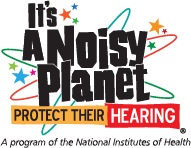
Children who are born with permanent hearing loss in both ears and who receive hearing aids or cochlear implants benefit from earlier introduction of the chosen intervention, according to a study published in the September 2017 issue of Pediatrics. The study explored how the timing of the intervention influences five-year language outcomes in children with permanent childhood hearing loss (PCHL). The study was funded in part by the National Institute on Deafness and Other Communication Disorders (NIDCD), part of the National Institutes of Health.
Roughly one to two of every 1,000 newborns experience PCHL in both ears. Because children begin learning speech and language in the first six months of life, it is important for parents to consider early interventions. The study supports other findings that earlier interventions produce better results than later interventions. The study also found that the benefits of earlier intervention were greatest in children with more severe hearing loss.
Researchers examined clinical records of 350 children in Australia with PCHL who had received a hearing aid or cochlear implant by age 3. At age 5 or 6, children were tested on their language and communication skills. Children who started using hearing aids at three months had significantly better language skills than those who started at 24 months. Similarly, those who received cochlear implants at six months developed better language skills than those who received the implants at 24 months.
Because of the need for prompt identification of and intervention for childhood hearing loss, universal newborn hearing screening programs currently operate in all U.S. states and most U.S. territories. With help from the federal government, every state has established an Early Hearing Detection and Intervention program. As a result, more than 96 percent of babies have their hearing screened within one month of birth.
In the study, newborns whose hearing was screened (and who were later diagnosed with PCHL) were more likely to receive interventions within six months than children who were not screened as newborns (72 percent of the screened group, compared with 32 percent of the unscreened group). The researchers suggest that a “seamless clinical pathway from screening to diagnosis to intervention” for children born with permanent hearing loss will allow for the development of optimal language skills.
The American Academy of Pediatrics’ Early Hearing Detection and Intervention Guidelines call for screening by one month of age, diagnosis of hearing loss by three months of age, and intervention services by six months. For parents, the recommended timeline is:
- Make sure that your baby’s hearing is screened either before leaving the hospital or immediately afterward (within one month).
- If your baby does not pass the hearing screening, immediately schedule a follow-up appointment with a pediatric audiologist. This appointment should occur by the time your baby is three months old.
- If your baby is confirmed to have hearing loss, chosen interventions should be started no later than age six months.
- A list of pediatric audiologists provided by the American Academy of Audiology or the American Speech–Language–Hearing Association can help you.
- Your Baby’s Hearing Screening (NIDCD) provides details on the screening timeline, how hearing screening is conducted, follow-up exams, and possible interventions. Also available in Spanish.
The research described was partly supported by award R01DC008080 from the NIDCD. The project was also supported by the Commonwealth of Australia through the Office of Hearing Services and through the establishment of the HEARing Cooperative Research Center and the Cooperative Research Centres Programme.
Last Updated Date



